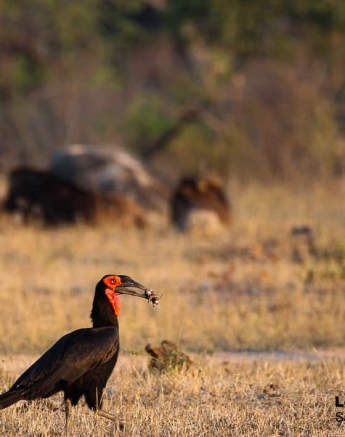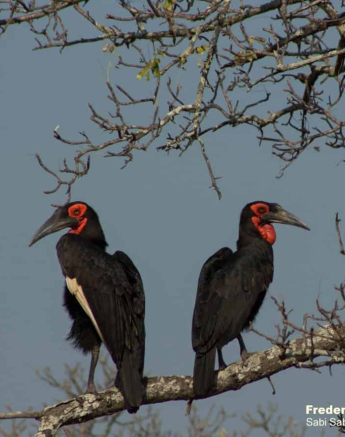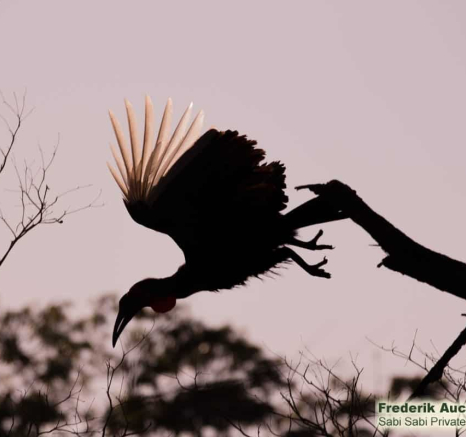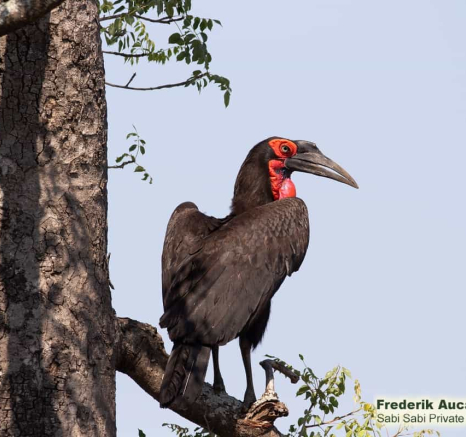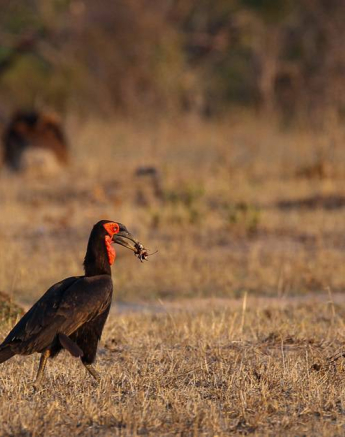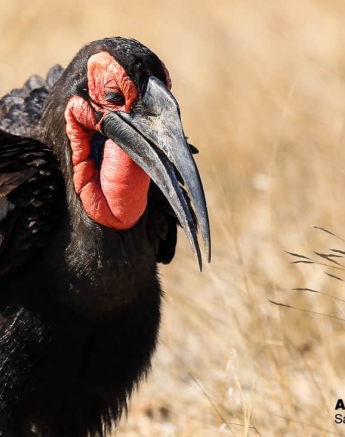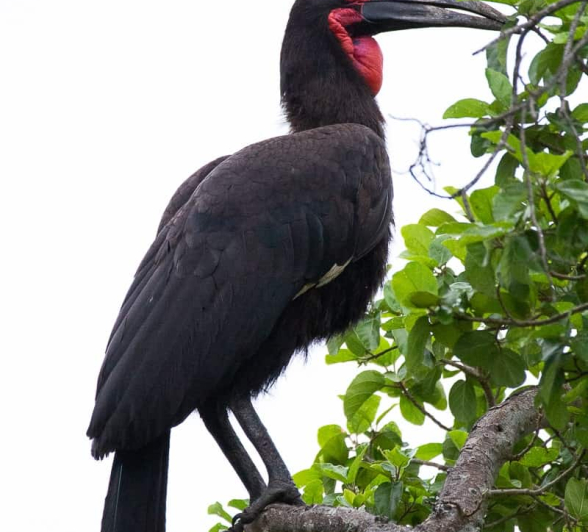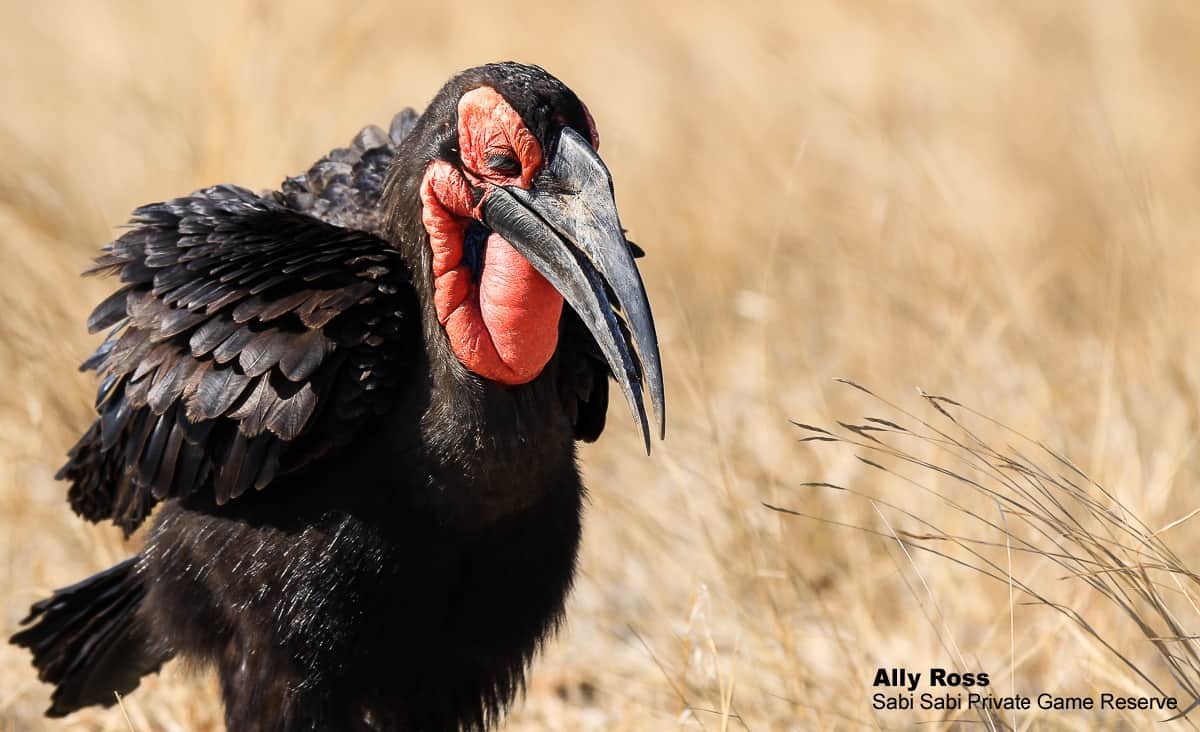Southern Ground Hornbill
on Sep 13, 2019Species name: Southern Ground-Hornbill
Scientific name: Bucorvus leadbeateri
Weight: Male: 4.2kg Female: 3.3kg
Shoulder Height: 90-130cm
General Habitat: Savanna - Favours open woodlands, also in grasslands with a few scattered trees.
Diet: Small animals such as squirrels and hares, reptiles such as lizards, snakes and tortoises; insects, frogs and snails; also, nestlings of some birds.
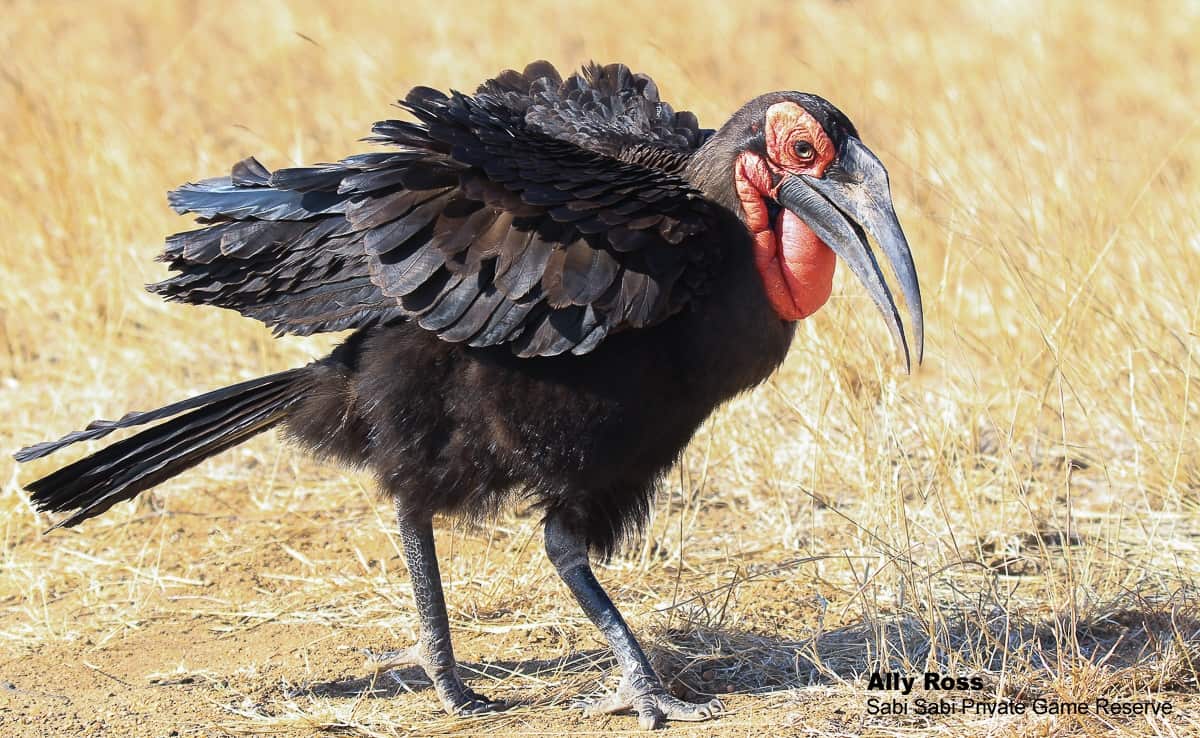
The largest Hornbill species in the world, the Southern Ground Hornbills are on the vulnerable list when it comes to their status and in some places, they are highly endangered. So, what a treat it is to see these birds here at Sabi Sabi.
You will often find them walking along the ground singularly or in small groups as they can spend 70% of their day on the ground looking for food, but you could still possibly find them up in a tree, especially during early mornings or as night falls as Southern Ground Hornbills roost in trees.
They are very territorial and will defend the area cooperatively (together). The Southern Ground Hornbill groups will comprise of a dominate breeding pair and the rest will be known as helpers, meaning only one pair will breed and chicks may only be raised every 3-9 years, making these birds to have one of the slowest reproduction in the bird kingdom. The female will nest in natural cavities in trees and will reuse the site each time if possible. During the breeding season, the male will feed the female as a form of courtship, she will also bring materials like leaves to line the nest. Unlike other hornbill species, Southern Ground Hornbills don’t enclose themselves into the cavity during incubation. She can lay 1-3 eggs but generally only 1 survives as siblicide is common.
You can identify males and females by noticing a blue patch on the female’s throat. The male’s skin around his face and throat is completely red and the bill seems to be little more robust. When it comes to aging, you will notice that the yellow facial skin can indicate ±1 year, flecked red ±2 years, orange ±3 and red ± 6 years. Southern Ground Hornbills have a lengthy life of 30-50 years.
As mentioned above, these magnificent birds are very vulnerable, due to not only the breeding rate, but human error mostly! Some cultures want to use the feathers for rituals, some believe the bird must be killed as it is a sign of bad luck. Electrocution, poisoning and deforestation are all contributors to this.
Luckily, we have many organisations that are creating awareness where they care about these birds and many breeding projects are focusing on increasing their numbers. We hope for the best when it comes to the future of the Southern Ground Hornbill.
My Memorable Sighting
Out on drive, we headed toward an open area. We noticed that some Lapwings were alarm calling and dive bombing something. As we approached closer, we noticed a sneaky Southern Ground Hornbill had raided the Lapwing’s nest and taken a chick from the nest. The Hornbill quickly scurried away to finish its little meal.
Photo Content
